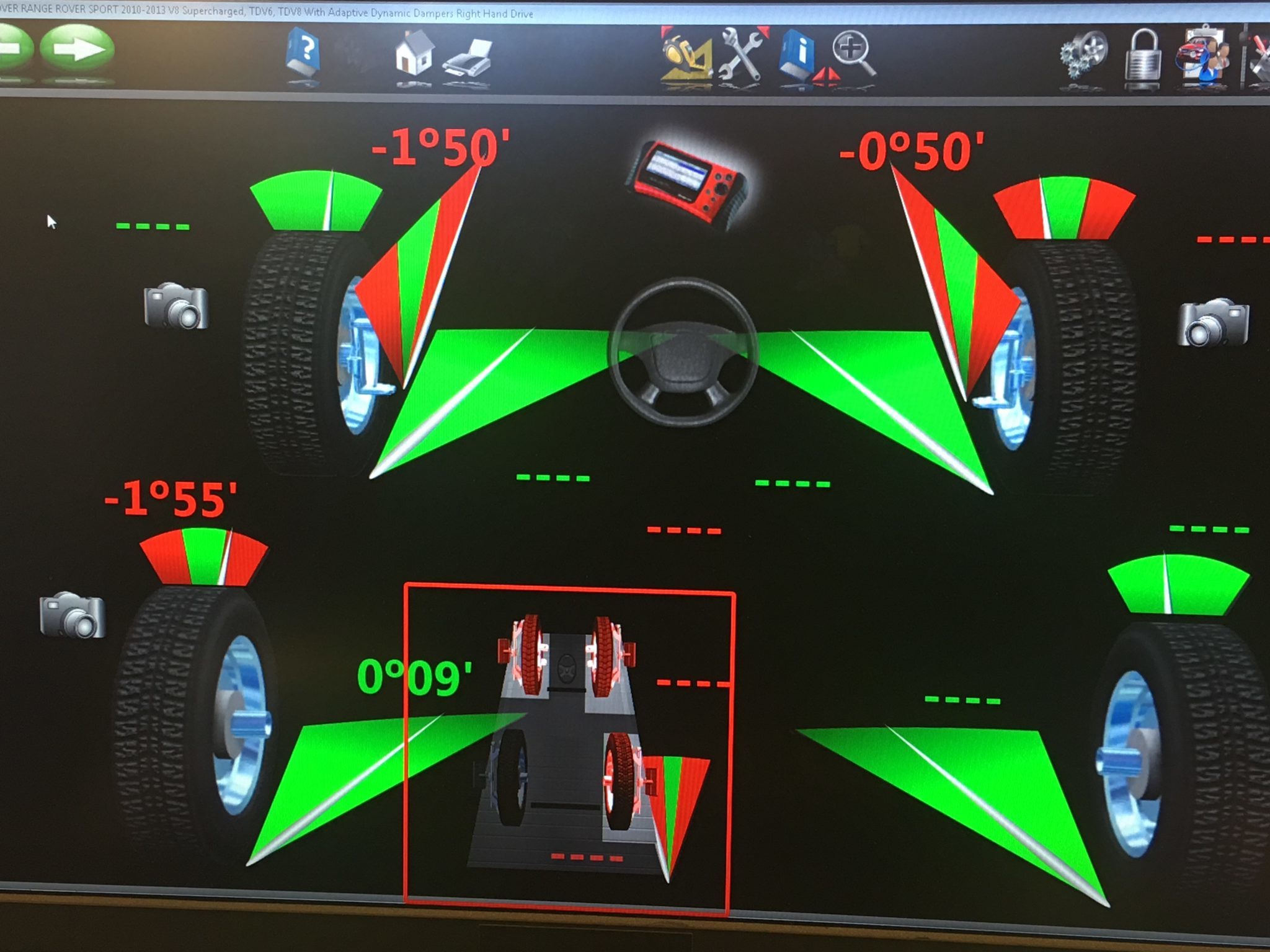If your tyres seem to be wearing down a little too quickly than you would expect, it could be down to several reasons. Your initial instinct may well be that it needs tracking
And you might well be right – well at least half right. Correcting a vehicle’s tracking usually only sets the two front wheels straight, so if the two back wheels remain out of alignment your car could still suffer from a crooked steering wheel, pulling one way or the other and uneven tyre wear.
Cars are becoming increasingly complex, but it makes no difference how sophisticated your engine, design and on-board computers are: your vehicle simply will not perform properly if the wheels do not all point in the same direction.
That is why it makes sense to have your wheel alignment checked and corrected as required.
The causes of wheel misalignment
There are several causes of wheel misalignment, such as worn suspension parts or incorrect adjustments, but the most common is the general wear through everyday driving, particularly if you hit potholes or kerb the wheels.
This is because joints and bushings in the suspension system slowly wear out, meaning the alignment is not properly held in place, and as the steering and springs gradually deteriorate over time, the alignment is thrown out even further.
Serious misalignment can occur within 12 to 18 months, but because the changes to alignment are slow and gradual, it’s easy for handling problems and tyre wear to become firmly established.
How to spot wheel misalignment
The most noticeable symptom will be tyre wear on certain areas of the tyre, particularly on the inside or outside edges. If you cannot see any noticeable wear, run your hands over the tyre and feel for any worn areas. Make sure to take care in case the tyre is so severely worn that the cords from the tyre is exposed.
Signs your wheel alignment needs adjusting may be
- your car may pull to the left or the right while driving on a straight, even road surface meaning you need to correct the steering.
- It pulls in either direction while braking.
- your steering wheel is not straight, even when driving straight.
When and how should you get wheel alignment checked?
You should make sure you get your alignment checked if your car shows any of the above symptoms, and even if not, you should have it checked annually or every 12,000 to 15,000 miles, perhaps as part of your car’s annual service. Our technicians will always check your tyre wear during your routine service to inform you if there is any abnormal wear.
What are the benefits of having wheel alignments checked?
The major benefit is that your car will be a lot safer to drive as misalignment reduces the stability of the car, particularly if you have to brake or swerve suddenly, and also increases tyre wear, meaning your car could be more susceptible to a blow-out and you will be replacing tyres more often. When a tyre is worn, the effectiveness of the grip is reduced dramatically, which can lead to handling, accelerating and braking problems. It will also compromise the fuel efficiency of the car.
So, making sure your wheels are properly aligned will mean you have a safer and more fuel-efficient car – and who doesn’t want that?








